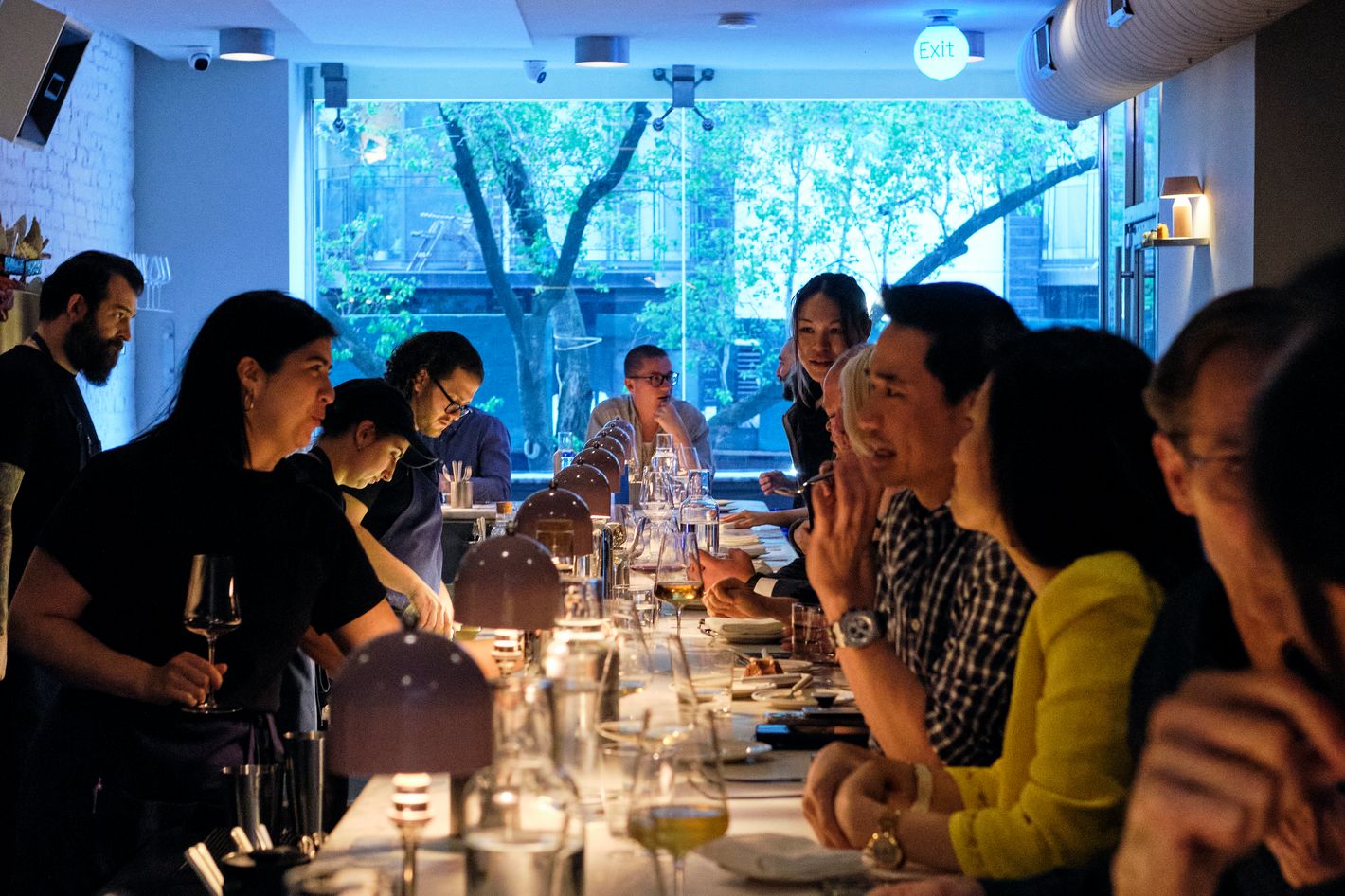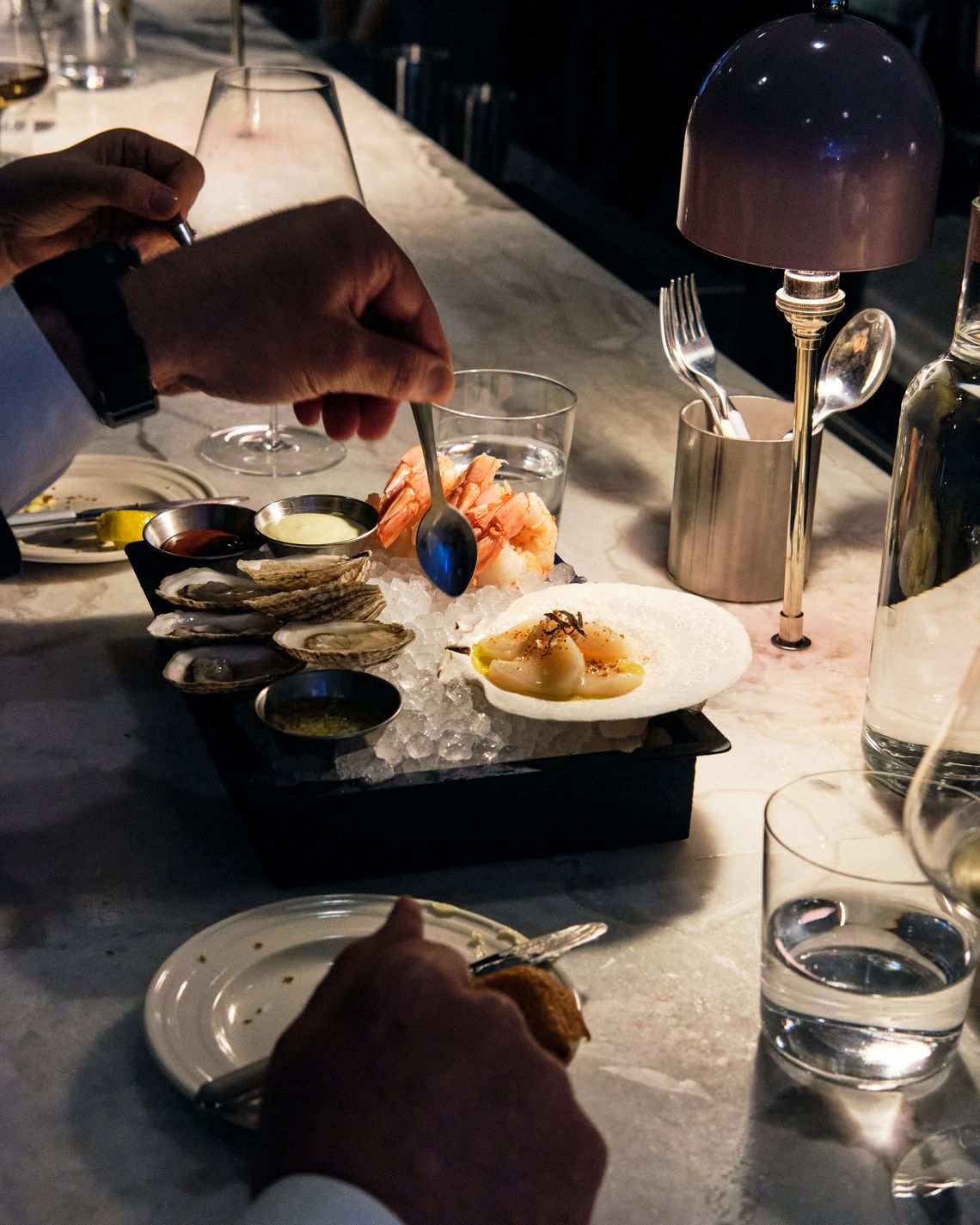when you want, where you want.
CJ Television
Where Does the Wine Bar End and the Restaurant Begin?
 Photo: Hugo Yu/
Photo: Hugo Yu/
Wine bars are taking over the city, naturally — keeping pace with the natural-wine boom and as a matter of course. There’s no imported trend New York will not digest and then supercharge. The diminutive bars à vin of Paris, where you get a splash of better-than-ever local plonk and a little saucer of saucisson sec, are urban treasures where you can expect grumpy service (in English, at least) and indulge existentialist fantasies. But the influential neo–wine bars that began cropping up in New York — Estela in 2013 and the Four Horsemen and Wildair, which followed in 2015 — were really wine restaurants, not in the sense of the old Montrachet, with its groaning cellar and white-tablecloth cuisine, but reservation-requiring, full-menu-offering, ambitious renovations of the grubby-casual original. In tweaking the formula, they have scrubbed off some of the grit that ennobled the form. Today’s New York wine bars, groused Aaron Ayscough, a Paris-based wine writer, feel like seated indie-rock shows held inside fancy theaters. “Admittedly,” he added, “I still enjoy those.”
So do I. My favorite of the new guard is Penny on E. 10th Street, an all-counter-seating outgrowth of Claud, chef Joshua Pinsky and co-owner Chase Sinzer’s popular wine bistro that opened in 2022. (Claud is named for Sinzer’s mother, Penny for Pinsky’s grandfather.) Light where Claud is dark, Penny occupies a second-floor space directly above, getting all the benefits that altitude and a larger glass frontage can provide. It serves only seafood, and a long marbled bar faces the day’s haul: ice-bedded piles of oysters, clams, and lobsters like something out of a 17th-century still life. (On at least one occasion, a dommed lobster has tried to make an unsuccessful run for it.)
Unlike Claud, Penny is primarily for walk-ins, and at the moment, it is open only on weeknights. All of that helps defuse some of the pressure of new-opening hysteria and plants its flag firmly in wine-bar casual. The food, however, is distinguished by the kind of careful attention that simplicity requires. You can safely ignore the Instagram bait, a $49 beggar’s purse of crème fraîche and fried onions topped with a gray-green pyramid of caviar, which has a good claim to being New York’s -latest most expensive single bite. The money’s better spent on one of Penny’s “ice box” raw-bar assortments, precious at $36 for a standard and $98 for a bounty but also preciously prepared: One night, alone at the bar, I watched Pinsky, a burly giant with dangling open ear gauges, dust individual clams with a paintbrush.
 Photo: Hugo Yu
Photo: Hugo Yu
Raw seafood loves Champagne, and Penny, whose list is overseen by Sinzer and Ellis Srubas-Giammanco (who trained at one of the city’s other great wine restaurants, Chambers), offers around 50 by the bottle plus other bubbles, like Domaine de Sulauze’s “Super Modeste” from Provence, which tastes of lime candy and will run you only $15 a glass.
I was even more taken with Penny’s cooked dishes, any of them restaurant ready. The typical octopus-and-potato appetizer was recast as tentacles on a smoky, paprika-stained cloud of whipped potatoes, which hid nuggets of pickled daikon. An oyster pan roast that looked deceptively thin beneath its flaky biscuit turned out to pack a fantastic wallop of the sea. The usual fish joint’s token meat dish is here a Dover sole, its ribs protruding like a Frenched rack of lamb, with upturned mushroom caps and melting little tabs of bone marrow, meaty enough for the most evangelical carnivore. Paired with a 2016 bottle of Fumey-Chatelain Savagnin from Arbois — like a glass of salted marzipan — it was a treat.
The dim is darker and the din is louder on the West Side at Demo, from chef Quang “Q” Nguyen and beverage director Jacob Nass, both vets of Wildair. Demo, named for nearby Father Demo Square, has some insouciance built in thanks to a separated front barroom. The real action is in the L-shaped dining room at the back, where a handsome, bearded Frenchman will come by to go over some “precisions” (pronounced pre-siz-ee-ons à la française) of the menu, explaining that the sauce gribiche on the rare mackerel is essentially egg salad, or to offer a sip of Sardinian pét-nat.
Go to enough wine bars and you will notice that their menus tend to overlap. Here, as elsewhere, is a bit of crudo (raw scallop in gremolata), a tartare (beef with cured yolk and potato chips), a plate of marinated squid. The swings get bigger but don’t always hit. Demo’s dressed-to-impress shellfish is a crab “casino” served on a scallop shell, which could have used more bread-crumb crisp. The mains are steak, grilled over charcoal, and an $84 lobster au poivre, whose meat and sauce fight each other at every bite. (I preferred Penny’s simply prepared butter-and-tarragon lobster, which was $72 and had the bonus of being significantly larger.)
Still, the room rolls with the tipsy ease that a nice cult-producer Burgenland rosé (Christian Tschida’s “Birdscape,” crunchy and cranberried) can provide, and you may be tempted, in your cups, to forgive slips and stumbles. “It’s vibe-y in here,” one of my guests declared mid-dinner as we noticed two diners — had they arrived together or not? — making out lustily at the bar. “Hope they didn’t eat that crab thing,” said another guest. “Or the squid thing.”
More Restaurant Reviews
All Rights Reserved. Copyright , Central Coast Communications, Inc.